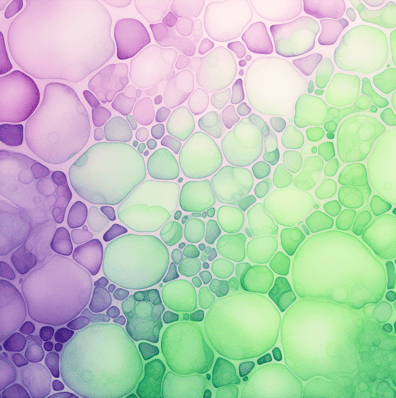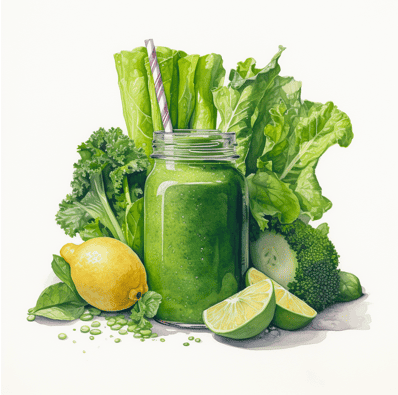
Don’t want to read the whole post?
To reduce cellulite, it’s crucial to modify your diet by reducing intake of foods high in sugar and unhealthy fats, particularly those found in processed foods. Instead, focus on consuming whole grains, healthy fats like those in avocados and nuts, and maintaining stable blood sugar levels. This approach not only aids in fat loss but also enhances collagen production, thereby improving skin elasticity and lessening the appearance of cellulite.
ABOUT ME
Be beauty. Be plant-based!
As a former Registered Nurse and avid plant-muncher, I’m in love with how simple plant-based foods make it easy to be beautiful.

You’ll also love:
Eating More to Weigh Less: Fruitful Freedom
Embracing Your Inner Goddess With A Plant-Based Lifestyle
Slimming Down: Is Soy Or Almond Milk Better?
Hey beautiful, if you’ve ever wondered what are the worst foods for cellulite, you’re not alone. Cellulite, with its unique dimpled skin appearance, is a common concern for many. While it’s a natural part of our body’s makeup, certain dietary choices can influence its visibility. In this post, we’ll explore how your food choices can impact cellulite and offer healthier alternatives to help you feel more radiant.
Cellulite and Its Causes
When it comes to feeling confident and beautiful, the appearance of cellulite can be a concern. Often described as orange peel skin, cellulite is a common skin condition where fat cells push against the connective tissue, creating a dimpled texture.

Understanding the most common causes of cellulite and how certain foods can impact its development is crucial in managing it effectively.
While there’s no overnight solution to eliminate cellulite, making informed dietary choices can help reduce its visibility. It’s not just about cutting out certain foods; it’s about embracing a healthy, balanced diet for better skin health and overall wellness.
You’ll also love:
Plant-Based Perks: Weight-Loss Made Easy
The Role of Diet in Cellulite
Sugar and Fat Accumulation
Consuming excessive sugar can lead to an accumulation of excess fat beneath the skin. This not only contributes to weight gain but also negatively impacts collagen production. Reduced collagen leads to decreased skin elasticity, which can make cellulite more visible.
Unhealthy Fats and Cellulite
Diets high in unhealthy fats, especially trans fats, are found to exacerbate cellulite. These fats are often present in processed foods and contribute to the accumulation of fat in fatty tissue, worsening cellulite’s appearance. Conversely, incorporating healthy fats from sources like avocados and nuts can support skin health and help reduce cellulite visibility.

Blood Sugar Levels and Inflammation
Elevated blood sugar levels, often caused by consuming refined carbohydrates like white bread and white flour products, can lead to inflammation. This inflammation can further worsen the appearance of cellulite. Opting for whole grains and complex carbohydrates helps maintain stable blood sugar levels, benefiting both skin health and overall wellness.
Inflammation and Cellulite
Inflammation is closely linked to cellulite, primarily through the effects it has on fat and connective tissues in the body. Cellulite often involves chronic, low-grade inflammation. This inflammation can arise from various factors, including poor nutrition, hormonal imbalances, and lifestyle factors such as stress and lack of exercise.

When it comes to cellulite, fat tissue itself is known to be pro-inflammatory, meaning fat cells secrete inflammatory molecules called adipokines. These molecules can lead to an inflammatory state in the body, contributing to the development and worsening of cellulite.
Addressing inflammation can therefore be a crucial part of managing cellulite. This can include dietary changes to include more anti-inflammatory foods, regular exercise, and avoiding factors that exacerbate inflammation, such as excessive sugar intake, trans fats, and sedentary lifestyle.
You’ll also love:
The Nutty Truth: Munch More Nuts to Weigh Less!
Foods to Avoid for Cellulite
High Salt Foods
Foods with a high salt content, like canned soups and cream cheese, are major contributors to water retention. This retention can exacerbate the dimpled appearance of cellulite, making it more visible. It’s important to watch out for hidden salt in everyday items to minimise its impact on cellulite.
Trans Fats
Present in many junk foods and fast-food items, trans fats are harmful to skin health. They contribute to the accumulation of fat cells and negatively affect blood circulation. This not only increases the fat stores in the body but also hinders the skin’s ability to repair and rejuvenate, thus worsening the appearance of cellulite.

Refined Carbohydrates
Foods like white bread and white flour products can lead to spikes in blood sugar levels. This causes inflammation, which can make cellulite more noticeable. Opting for whole grains can help stabilise blood sugar and reduce this inflammatory response.
Fried Snacks
Favourites like potato chips and French fries, with their high fat and salt content, are detrimental when trying to manage cellulite. These foods contribute to poor nutrition and exacerbate the factors that cause cellulite.
Healthy Alternatives for Cellulite Reduction
Leafy Greens
Incorporating leafy greens such as spinach and kale into your diet can have a significant impact on overall health and specifically on reducing cellulite. These vegetables are rich in essential nutrients that aid in collagen production, an important factor in maintaining skin elasticity and reducing the appearance of cellulite.

Citrus Fruits
Citrus fruits are not only refreshing but also a powerhouse of vitamin C, which is vital for healthy blood vessels and skin. Vitamin C aids in collagen production, helping to keep the skin firm and reduce the appearance of cellulite.
Healthy Proteins
Integrating healthy proteins from plant-based sources like legumes into your diet is essential for tissue repair and maintaining muscle tone. This helps in fat loss and reduces the sagging of skin, which can make cellulite less noticeable.
Green Tea
Regular consumption of green tea can be beneficial for skin health. It’s known for its antioxidant properties, which help combat free radicals. These antioxidants can promote healthier skin and aid in the reduction of cellulite.
You’ll also love:
Green Tea Benefits For Skincare: Your Personal Beauty Brew
By focusing on these dietary choices and incorporating them into a balanced lifestyle, you can make significant strides in managing the appearance of cellulite. Remember, the key is consistency and a holistic approach to health and beauty.
Lifestyle Factors Influencing Cellulite
Alcohol and Caffeine
Both alcoholic beverages and caffeine can have a significant impact on cellulite. While moderate caffeine consumption may not be harmful, excessive intake can lead to dehydration and poor blood circulation, exacerbating cellulite appearance. Similarly, alcoholic drinks contribute to weight gain and fluid retention, negatively affecting skin health and increasing the visibility of cellulite.
Exercise and Circulation
Regular physical activity is crucial in managing cellulite. Exercise improves blood flow and muscle tone, which can reduce the appearance of cellulite. Activities that promote blood circulation and build muscle, such as cardiovascular and strength training exercises, are particularly beneficial.
Hydration and Diet
Staying well-hydrated is essential for skin health and can reduce the appearance of cellulite. Water helps to flush out toxins and improves skin elasticity. Alongside hydration, a balanced diet rich in nutrients supports overall skin health and can minimise the effects of cellulite.

Additional Remedies and Treatments
Cellulite Creams
There are various cellulite creams available that claim to reduce the appearance of cellulite. These creams often contain ingredients that aim to improve blood circulation and skin elasticity. However, it’s important to have realistic expectations, as their effectiveness can vary.
Professional Treatments
For those looking for more significant results, professional treatments such as laser therapy or body contouring can be considered. These treatments can reduce cellulite appearance more effectively, but they often come with a higher cost and require consultation with a healthcare professional.
By considering these lifestyle factors and additional remedies, you can take a proactive approach to reduce the visibility of cellulite and enhance your skin’s health and appearance. Remember, consistency and a holistic approach are key in achieving and maintaining results.
What are the worst foods for cellulite?
In conclusion, understanding what are the worst foods for cellulite and adjusting your diet accordingly can play a significant role in managing cellulite. By avoiding high-salt, sugary, and processed foods, and embracing a diet rich in leafy greens, citrus fruits, and healthy proteins, you can significantly improve your skin’s appearance. Remember, a balanced approach that includes a healthy diet, regular exercise, and staying hydrated is key to reducing cellulite and boosting your overall health and confidence.
FAQ: Worst foods for cellulite
What drinks get rid of cellulite?
Drinks that aid in hydration and detoxification can help reduce cellulite. Water is the most effective, as it helps to flush out toxins and improve skin elasticity. Green tea is also beneficial due to its antioxidant properties, which fight free radicals and promote healthy skin. Additionally, herbal teas and fresh fruit juices, especially those high in vitamin C, can support skin health and reduce the appearance of cellulite.
What causes cellulite to get worse?
Several factors can exacerbate cellulite. A diet high in unhealthy fats, sugars, and salt leads to fat accumulation and water retention, worsening cellulite’s appearance. Lack of exercise, poor blood circulation, and hormonal imbalances also play a role. Furthermore, lifestyle choices like smoking and excessive alcohol consumption can contribute to the worsening of cellulite due to their impact on overall skin health.
What deficiency causes cellulite?
While no specific nutrient deficiency is directly responsible for causing cellulite, a lack of certain nutrients can contribute to its appearance. For instance, deficiencies in vitamins and minerals that support skin health, like vitamin C, vitamin E, and zinc, can affect skin elasticity and collagen production. A balanced diet rich in these nutrients is essential for maintaining healthy skin and potentially reducing the visibility of cellulite.
Does anything break up cellulite?
While no method can completely ‘break up’ cellulite, certain treatments and lifestyle changes can reduce its appearance. Regular exercise, particularly activities that tone muscles and improve blood circulation, can visibly reduce cellulite. Massage and dry brushing may also help by stimulating blood flow and lymphatic drainage. Additionally, professional treatments can target cellulite, but it’s important to have realistic expectations about the results.
Remember, while cellulite is a common and natural skin condition, maintaining a healthy lifestyle can help minimise its appearance.
References
Can Cellulite Be Treated With Diet? At NutritionFacts.org